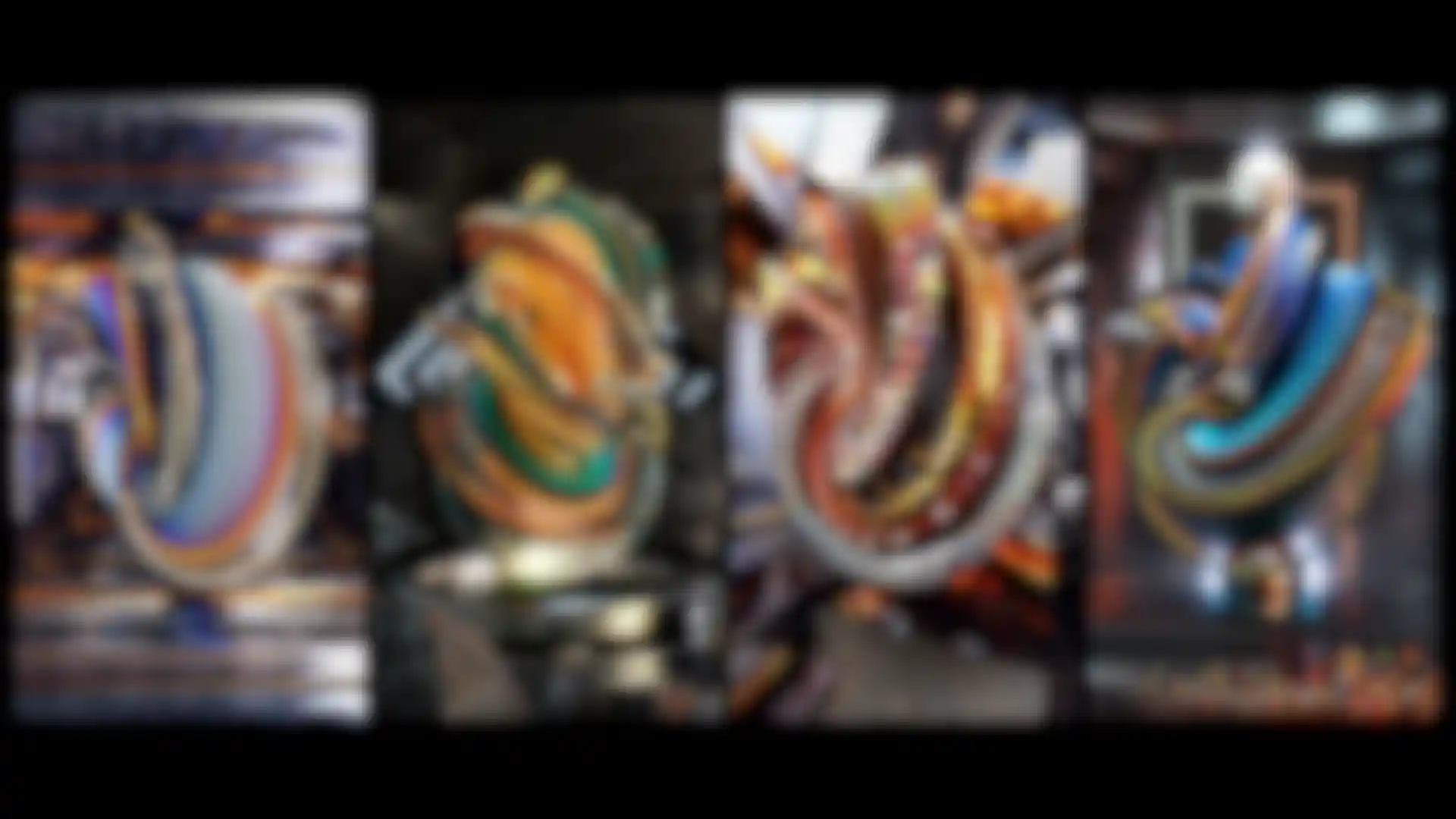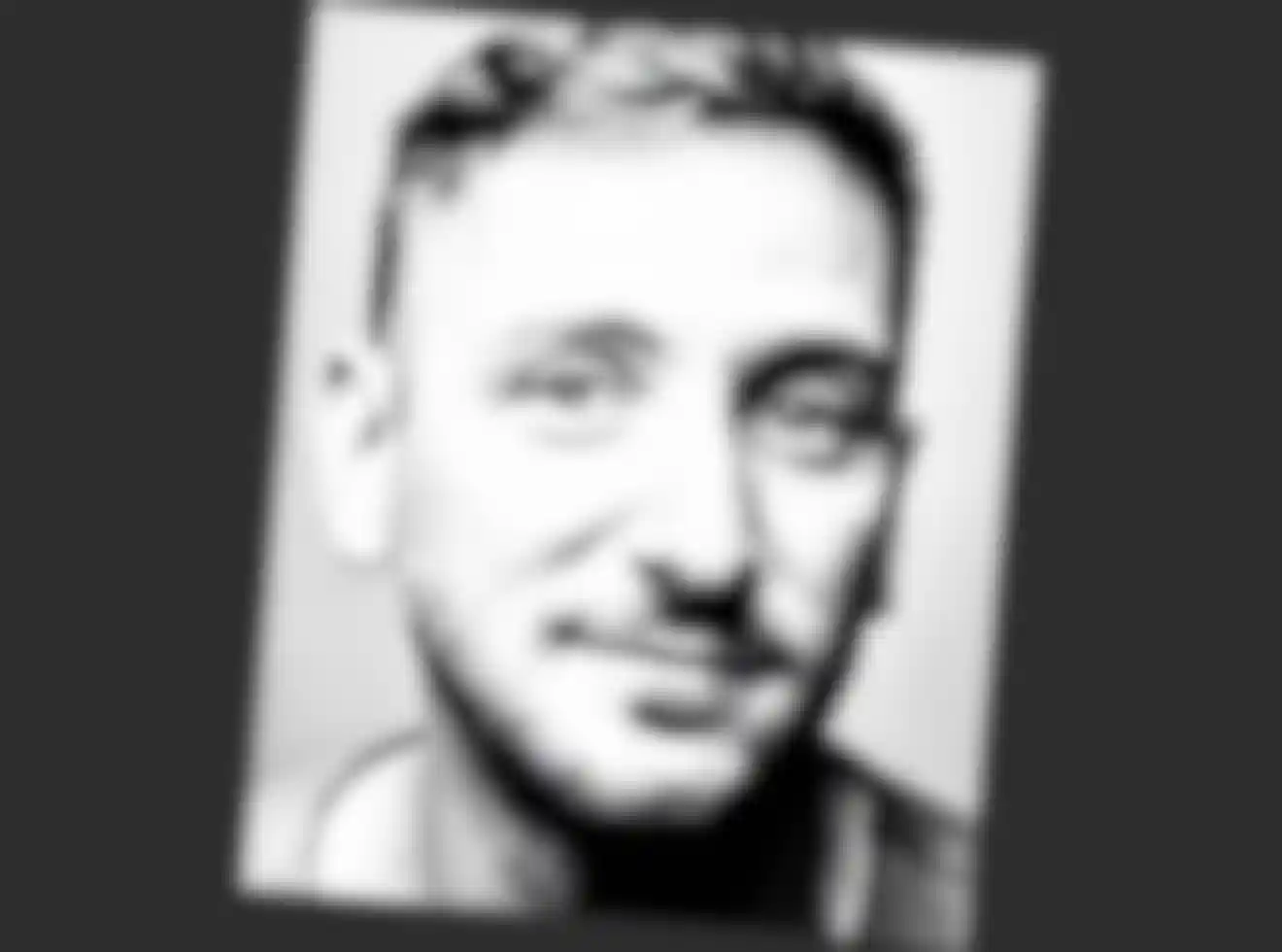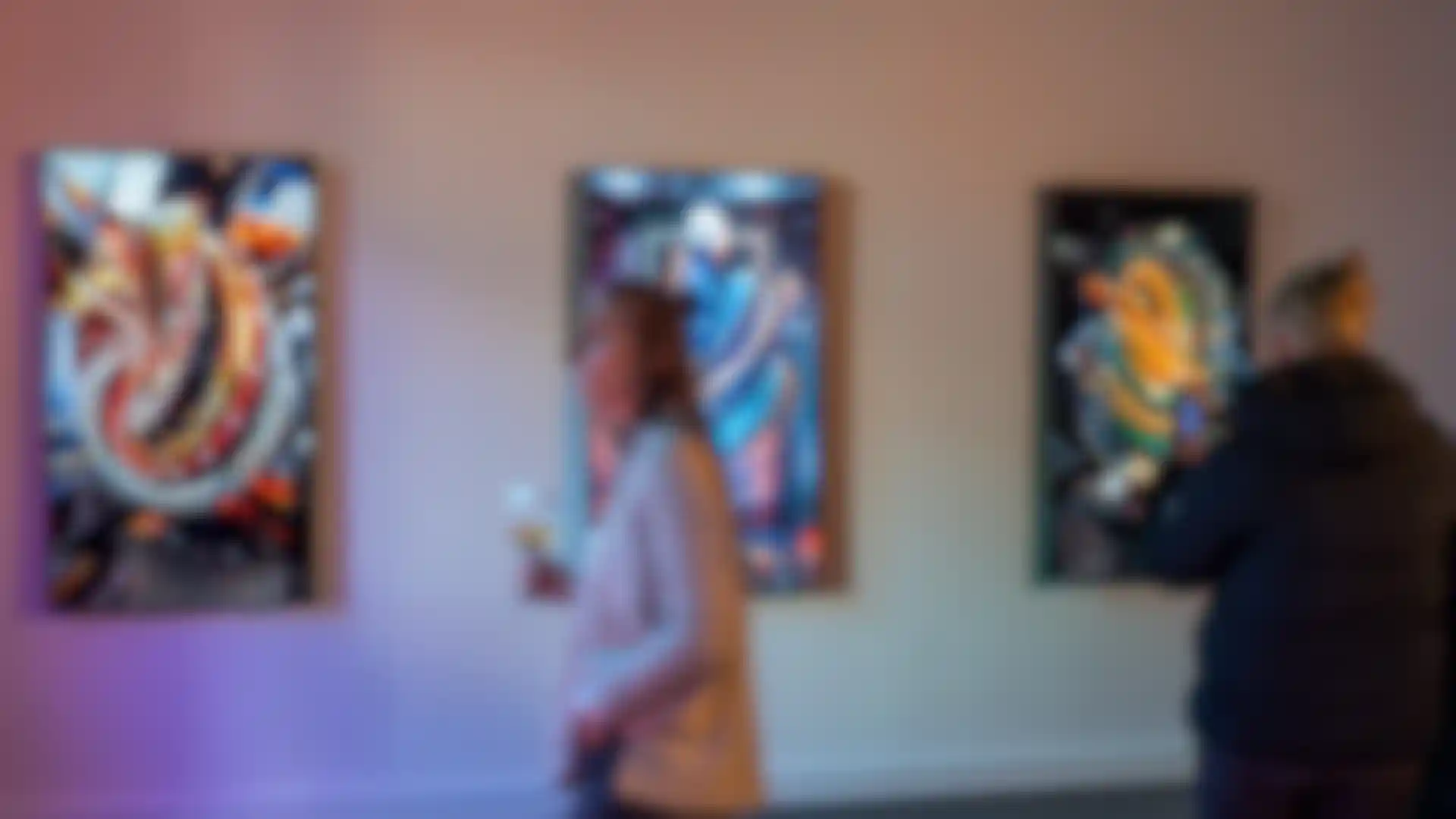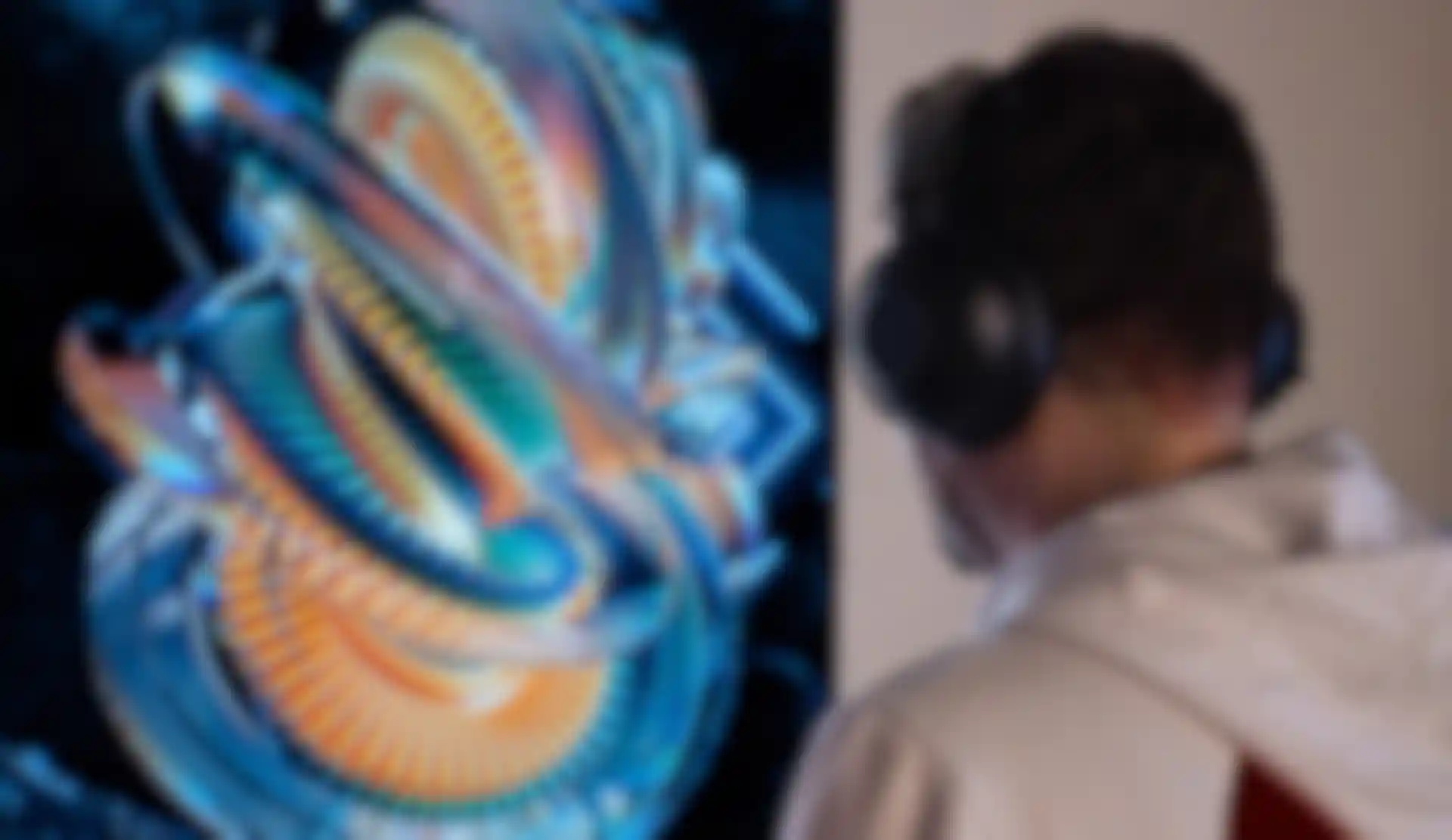
Patric Ortmann Explores the Power of Infinite Motion With Maxon One Experience the endless energy of ‘O∞ULT PLACES’
Hypnotic and meditative, Patric Ortmann’s digital artworks combine visually mesmerizing looping animations with soundscapes. Described as an audiovisual journey, his art has been exhibited virtually and physically with a VR layer to enrich the experience.
While Ortmann’s commercial deck includes large-scale audiovisual media installations, concert visuals, projection mapping and UI for brands and artists, he also produces personal work under the name MotionSickness.
We talked with him about his NFT project “O∞ULT PLACES”, which was made using Cinema 4D, Redshift and After Effects to create a combination of form, movement and music that is representative of his unique aesthetic.
Here is what he had to say about his creative process and approach to exhibiting digital art to collectors and new audiences.
Please introduce yourself and tell us about your path to digital art.
Ortmann: I am a freelance motion designer and art director based in Frankfurt, Germany. I have 15 years’ experience working for studios, including Pixomondo, ACHT Frankfurt, and Bright! Studios, on projects for brands like Audi, Mercedes, VW and Nike.

I am more than happy to say my passion found me. Having apprenticed as a professional chef, the stress didn’t suit me, and I looked for another path. I was blown away when I was introduced to media production and 3D animation during my studies.
I was more of a generalist when I started out, so I got to do many different things, which I loved. I started as a 2D motion designer with Pixomondo, eventually learning 3D, and that was it. Now, my passion is looping animations, particles, projection mapping and graphic design, which I combine in my artworks, so the work feeds into my art.
What types of work do typically do for your commercial clients?
Ortmann: I still enjoy a variety of projects and am attracted to the visual impact of large-scale formats, working with everything from audiovisual media installations, concert visuals, and projection mapping for brands to designing UI interfaces for cars. I have clients across a wide range or areas, so it’s never boring.
What drives your experimental work, and where do you find inspiration?
Ortmann: It's difficult to experiment within the boundaries of commercial work, which is why I have an experimental space. MotionSickness is my playground, where I can express myself creatively as an artist.

It’s not easy to explain what inspires me. It’s an intrinsic passion, like an idea that keeps tickling my brain, and I must try to create it. For example, my passion for 3D looping animations comes from understanding what is at the core of a good loop. The appeal is that it has no beginning or end; it’s like a meditation point. The knots in my “O∞ULT PLACES” series are forever flowing like this.
A Mobius loop was part of the inspiration for this project – it’s such a simple shape, but has a complexity and energy that comes from somewhere. I started thinking about this, building stories about the energetic forces in these mystic knots and the spaces where they release power to the universe.
When did you start designing the knots in the “O∞ULT PLACES?”
Ortmann: The original knot HYP·NO_WO·RM was born and minted in March 2021. Makersplace gave me the chance in November 2021 to have an official, supported NFT drop, and the new works are a natural evolution of my exploration, placing the knots in occult spaces.

Please tell us about how you created these knots?
Ortmann: I started by creating the Mobius knots directly in Cinema 4D, always keeping the base structure simple. I combined different base-shape archetypes to add texture and complexity. Sometimes I have an idea of what I want a knot to look like, and sometimes, it evolves out of experiments with boxes or spheres, applying simple shaders with just a gradient.
Cinema 4D’s Mograph helped me work towards my vision. With some simple math along with a cloner with several effectors, it was a super intuitive process. I cloned objects onto the surface or edges of the core shape and tried different things until I had a 3D base layer I liked. Then, I added more clones, like scattered glass and spheres, for example, to achieve the effect I wanted.
The glass was a challenge, but with help from Wes Cockx, I was able to advance my understanding of Redshift glass shaders. Sometimes, I also added subtle camera work, using Greyscalegorilla Plus plugins, adding a vibrate tag or a camera pivot depending on the artwork.

When animated, the twisting loop looks complex. Getting the movement right over the entire frame duration depends on several factors and requires a lot of adjustments and preview renders. I worked on each piece until it felt right, sometimes adding or deleting layers during the process.
To get the right colors, I experimented until I got a balanced look and feel. I used Adobe Color with Greyscalegorilla’s Dieter Rams-inspired gradients to apply the main colors. Depending on the composition, I added black, gold and glass materials – I love their effect, making the visual really pop. Finally, I added a background environment, thinking about the space where a specific mystic knot might be, and then rendered with Redshift.

Was there anything you had to do differently or learned to do in a new way?
Ortmann: Cinema 4D is so big that I learn something new every time I open it, and this project helped me better understand the importance of hierarchy in Object Manager. Working with so many layers, I learned to organize and integrate my scenes better. I also got much better at lighting and texturing. All this experimentation, learning, and improvement feeds into my evolution as an artist, as well as my commercial work.
What is the most rewarding aspect of creating your NFT art?
Ortmann: I get so much back that I never expected. Hearing people from all over the world tell me how much they appreciate and value my work is pure joy. It also puts value on digital art in a way I never imagined.
I was super happy to be one of the first artists to exhibit at Flux Creative’s NFT exhibition at NEONREAL – The Gallery in Düsseldorf. That exhibition offered a headset that let visitors explore more art in a virtual gallery, including my own.
Part of the Düsseldorfer Nacht der Museen 2023, it attracted collectors and people new to NFT art. I feel that physical NFT exhibitions help people understand and appreciate digital art in the same way they value traditional art.

How can AR enhance exhibited work, and do you think there is a future for that?
Ortmann: Since the concept of buying digital art is still quite abstract and hard to explain to those new to NFT art, I wanted to add an extra layer of engagement and break the boundaries of the screens. I came across the idea of using AR from Kristian Levin Aka. noCreative, and he helped me set it up for my work.

Using the Artvive App, my signed and registered 2D art print can launch the full audiovisual NFT experience. I included an NFC chip on the back of each print that opens the artwork webpage on a mobile device near the piece. Since it is the nature of blockchain technology to embed information where everyone can see it, this hopefully helped those new to NFT understand how the technology works.
Thinking about the future of digital art, technology like Apple Vision Pro will change the way we interact with digital spaces, and I’m interested in using a combination of AR and VR and integrating real 3D objects in my art experiences.
What has been the most surprising thing about creating your art?
Ortmann: Art is like a living creature and only happens when you give it time, space and breath to grow and develop. Sometimes an artwork doesn't want to come alive, and you have to let it go or keep it until it’s ready.